
The Feasibility of Designing a Compact Ebike Charger
1. Introduction: The Quest for Compact Ebike Charging Solutions
The increasing adoption of electric bicycles as a sustainable and efficient mode of transportation has led to a growing demand for user-friendly charging solutions. While ebikes offer numerous benefits, the size and weight of their chargers often present a practical inconvenience, particularly for users who require charging on the go. In contrast, laptop chargers have seen significant reductions in size and weight over the years, largely due to advancements in power electronics and materials. This disparity naturally raises the question of feasibility: can an ebike charger be designed with a form factor as compact as that of a standard laptop charger? This report aims to explore this question by conducting a comprehensive analysis of the power requirements of electric bicycles, the specifications of both ebike and laptop chargers, the underlying technologies, the challenges involved in scaling power in a compact design, potential future advancements, relevant safety and regulatory considerations, and existing examples of smaller ebike chargers. By examining these critical aspects, this report will assess the technical and practical possibilities of achieving a truly compact ebike charging solution.
2. Understanding the Power Demands of Electric Bicycles
The design of an ebike charger is fundamentally dictated by the voltage and current requirements of the ebike battery. These parameters vary depending on the intended use and power output of the electric bicycle. Common ebike battery systems operate at nominal voltages of 36V, 48V, and 52V, with some high-power models utilizing 60V or 72V systems 1.
Typical Battery Voltages and Current Requirements (36V, 48V, 52V, etc.)
Electric bicycles employing 36V systems are generally found in lower-power configurations, often around 250W 1. These systems strike a balance between performance and cost, making them a popular choice for commuter bikes and mid-range e-bike models 2. While sufficient for leisurely rides on relatively flat terrain, they may not offer the high speeds or hill-climbing capabilities of higher voltage systems 2. When fully charged, a 36V battery typically exhibits a voltage between 36V and 42V on a multimeter 3. The charger for such a system would need to output a voltage up to 42V to achieve a full charge 4. Even for these lower voltage systems, the charging current can be significant. Standard ebike chargers often deliver currents between 2A and 4A 7. This means a 36V battery being charged at 2A requires the charger to provide around 84W of power, a value that already approaches the upper end of standard laptop charger power outputs. The need for a charging voltage exceeding 40V, unlike the sub-20V outputs of most laptop chargers, necessitates different component ratings within the charger.
48V and 52V systems represent the most prevalent voltage range for contemporary electric bicycles 1. These systems offer enhanced performance, providing faster speeds, quicker acceleration, and improved hill-climbing capabilities 2. They typically power motors ranging from 500W to 1,500W, and even up to 3,000W in some cases, offering a good balance for typical ebike usage 1. A fully charged 48V battery usually reads between 48V and 54.6V 3, requiring a charger with an output voltage in this range, often around 54V to 56V 8. Similarly, a 52V battery, which is often considered practically interchangeable with a 48V system 1, has a maximum charge voltage of approximately 58.8V 1. Chargers for these systems also commonly operate with currents between 2A and 4A 7. A 48V battery charging at 3A, for instance, demands a power output of around 162W from the charger. The widespread use of these higher voltage systems establishes a more demanding target for compact charger design due to the increased voltage and power output necessary. Components within the charger must be capable of withstanding these higher voltages, influencing their selection and potentially their size.
60V and 72V systems are typically found in e-moto style builds, designed for power levels ranging from 3,000W up to around 15,000W 1. These high-performance systems prioritize maximum speed and power, often at the expense of component cost and complexity. Given the significantly higher power demands of these systems, it is unlikely that a charger with a laptop-charger-like form factor could be feasible with current technology. The extreme power throughput would necessitate very large and robust components for efficient power conversion and effective heat dissipation.
Beyond voltage, the current requirements for charging ebike batteries are also crucial. Standard ebike chargers commonly deliver a steady current between 2A and 4A 7, while fast chargers can provide currents ranging from 4A to 8A, significantly reducing charging times 7. Even at the more moderate voltage levels of 36V and 48V, these current requirements translate to substantial power output needs for the charger. For example, a 36V battery charging at 3A requires 126W, and a 48V battery at the same current needs 162W. This level of power output is considerably higher than that of many standard laptop chargers.
Power Consumption and Watt-Hour Capacity
The energy capacity of an ebike battery, typically measured in Watt-hours (Wh), is a critical factor determining the range of the ebike and the amount of energy that needs to be replenished during charging 1. This capacity is calculated by multiplying the battery's voltage by its Amp-hour (Ah) rating (Energy = Voltage x Ah) 3. Common ebike battery capacities range from around 300Wh to 700Wh and can even exceed this for long-range models 3. For instance, a 36V battery with a 10Ah capacity has 360Wh of energy (36V x 10Ah = 360Wh), while a 48V battery with a 15Ah capacity stores 720Wh (48V x 15Ah = 720Wh) 3. The substantial energy capacity of ebike batteries necessitates chargers with sufficient power output to recharge them within a reasonable timeframe. A small, low-power charger would take an impractically long duration to fully replenish a large ebike battery, making it unsuitable for most users.

3. Laptop Chargers as a Benchmark for Compactness
Laptop chargers have become increasingly compact and efficient, serving as a desirable benchmark for other portable electronic device chargers. Understanding their typical specifications and the technologies behind their miniaturization is essential for evaluating the feasibility of a similarly sized ebike charger.
Typical Voltage and Current Output Specifications
Most laptops on the market have a power consumption specification ranging between 33W and 100W, while high-end and gaming laptops can exceed 120W 19. The typical output voltage of laptop chargers is around 19V to 20V 19. This voltage is significantly lower than the charging voltages required for common ebike batteries (typically above 40V). This lower voltage requirement simplifies the design of laptop chargers and reduces the electrical stress on their internal components.
The current output of a laptop charger varies depending on its wattage. For example, a common 65W charger with an output voltage of 19.5V will provide a current of approximately 3.3A (65W / 19.5V = 3.33A) 23. Higher-power laptop chargers, such as those rated at 140W with a 20V output, can deliver currents around 7A (140W / 20V = 7A). While these higher current outputs are comparable to those of some ebike chargers, it is crucial to note that they occur at a much lower voltage. The overall power output, which is the product of voltage and current, remains significantly lower for most laptop chargers compared to ebike chargers operating at higher voltages.
Power Output Ranges (45W, 65W, 90W, etc.)
Laptop chargers are available in various wattage ratings to cater to the diverse power requirements of different laptop models 23. Standard wattage chargers, ranging from 45W to 65W, are typically sufficient for everyday laptops used for tasks like browsing, email, and video streaming 23. High wattage chargers, with ratings between 90W and 140W, are designed for more power-intensive laptops, including those used for video editing, gaming, or other demanding applications 23. Some super-performance workstations may even require chargers with power outputs ranging from 200W to 300W 23. Despite these variations, even the highest-wattage laptop chargers generally fall below the power requirements of many common ebike charging scenarios, especially when considering the higher voltage demands of ebike batteries. For instance, a 48V battery being charged at a moderate current of 3A requires 144W of power, which already exceeds the typical range of standard laptop chargers.
Physical Dimensions and Form Factors
A key characteristic of modern laptop chargers is their compact physical size and lightweight design 25. This compactness is a result of continuous technological advancements in power electronics, driven by the consumer demand for portable and convenient charging solutions. Recent innovations, such as the adoption of Gallium Nitride (GaN) technology, have further enabled the production of even smaller and more efficient chargers 27. Examples include highly compact wall adapters that can deliver significant power and portable chargers that can charge multiple devices simultaneously. This trend towards miniaturization in laptop chargers sets a desirable benchmark for ebike chargers, but the fundamental differences in power demands must be carefully considered.

4. The Size and Power Discrepancy: Ebike Chargers vs. Laptop Chargers
A direct comparison of the power output and physical dimensions of typical ebike chargers and laptop chargers reveals a significant discrepancy, highlighting the challenges in achieving a laptop-charger-sized ebike charger.
Comparative Analysis of Power Output (Watts)
Ebike chargers commonly deliver power in a range that often surpasses that of laptop chargers. For instance, a 36V ebike battery charged at 2A requires an 84W charger 35, while a 48V system charged at 3A needs a 162W charger. Fast charging scenarios, which are increasingly common for ebikes, can involve currents up to 8A, resulting in power outputs exceeding 300W for 48V or 52V batteries 7. Some high-performance e-moto batteries require even higher power levels for charging. In contrast, laptop chargers typically operate in the range of 45W to 150W 23, with only specialized high-end workstation chargers reaching power outputs of 200W to 300W 23. This general need for higher power output in ebike chargers is a primary factor contributing to their larger size compared to laptop chargers.
Comparison of Physical Dimensions and Weight
The physical dimensions and weight of typical ebike chargers further underscore the size difference when compared to laptop chargers. For example, Bosch ebike chargers, a well-regarded brand, have different models with varying sizes. Their Compact Charger measures approximately 6.3 x 3.0 x 1.8 inches and weighs around 1.3 lbs 36. Their Standard Charger is larger, at approximately 7.5 x 3.4 x 2.1 inches and weighing around 1.8 lbs 36. Other ebike chargers, like the one for the Dance ebike, have dimensions of 17.5 cm x 8 cm x 3.5 cm (approximately 6.9 x 3.1 x 1.4 inches) 40. In comparison, a 60W USB-C laptop charger can be as small as 2.5 x 1.1 x 2.5 inches and weigh only 5 oz (around 0.3 lbs) 26. Even powerful GaN-based laptop chargers capable of delivering 300W can maintain a relatively compact size 29. This significant difference in physical size and weight clearly illustrates that current ebike chargers are considerably bulkier than most laptop chargers, especially those leveraging advanced technologies like GaN. This disparity likely reflects the higher power handling requirements and potentially different thermal management needs of ebike chargers.
Key Table: Comparison of Ebike Chargers and Laptop Chargers
The following table provides a comparative overview of typical specifications for ebike chargers and laptop chargers:
| Feature | Ebike Charger (36V) | Ebike Charger (48V) | Ebike Charger (52V) | Laptop Charger (45W) | Laptop Charger (65W) | Laptop Charger (90W) | Laptop Charger (120W) |
| Battery/Wattage | 36V | 48V | 52V | 45W | 65W | 90W | 120W |
| Charging Current (A) | 2-4 | 2-4 | 2-4 | - | - | - | - |
| Output Voltage (V) | ~42 | ~54.6 | ~58.8 | ~19-20 | ~19-20 | ~19-20 | ~19-20 |
| Output Current (A) | 2-4 | 2-4 | 2-4 | ~2.25-2.37 | ~3.25-3.42 | ~4.5-4.74 | ~6-6.32 |
| Power Output (W) | 84-168 | 109-218 | 118-235 | 45 | 65 | 90 | 120 |
| Typical Dimensions (in) | ~6.3x3.0x1.8 | ~7.5x3.4x2.1 | ~7.5x3.4x2.1 | ~4x2x1 | ~4.5x2.5x1.2 | ~5x3x1.5 | ~6x3x1.7 |
| Typical Weight (lbs) | ~1.3 | ~1.8 | ~1.8 | ~0.5 | ~0.7 | ~1.0 | ~1.2 |
Note: Dimensions and weights are approximate and can vary between manufacturers and models 25.
This table clearly illustrates that ebike chargers generally operate at higher voltages and power outputs compared to laptop chargers, which contributes to their larger physical size and greater weight. Bridging this gap requires a deeper understanding of the design and technology behind compact laptop chargers.
5. The Anatomy of Compact Laptop Chargers: Design and Technology
The remarkable compactness of modern laptop chargers is achieved through a combination of efficient design principles and advanced electronic components. Understanding these elements is crucial for evaluating their potential applicability to ebike charger design.

Key Components: Transformers, Rectifiers, Capacitors, etc.
At their core, both laptop and ebike chargers rely on fundamental power electronics components to convert AC mains power into the DC power required by the device's battery 22. Transformers play a vital role in stepping down the high-voltage AC from the power outlet to a lower voltage suitable for the electronic device 43. Rectifiers, typically employing diodes, are then used to convert this lower-voltage AC into pulsating DC 22. Finally, capacitors are used to smooth out these pulsations, resulting in a more stable DC voltage output 22. While these basic components are essential in both types of chargers, their specific ratings, size, and performance characteristics differ significantly based on the power requirements of the application. The higher voltage and current demands of ebike chargers often necessitate the use of larger and more robust versions of these fundamental components.
The Role of Switching Power Supplies
A significant advancement that has enabled the miniaturization of laptop chargers is the widespread adoption of switched-mode power supplies (SMPS) 32. Unlike older linear power supplies that relied on large, heavy transformers operating at mains frequency (50 or 60 Hz), SMPS operate at much higher switching frequencies, typically in the kilohertz range 32. This high-frequency operation allows for the use of much smaller and lighter transformers and other inductive components 32. Furthermore, SMPS employ sophisticated switching circuitry and feedback mechanisms to achieve highly efficient voltage regulation 32. This increased efficiency translates to less energy wasted as heat, which in turn reduces the need for large heat sinks and contributes to the overall compactness of the charger. The implementation of SMPS technology is therefore a critical factor in achieving the small form factor of laptop chargers and would be an indispensable element in any attempt to create a miniaturized ebike charger.
The Impact of Gallium Nitride (GaN) Technology
A more recent breakthrough in power electronics that has further revolutionized the design of compact chargers, particularly for laptops and other portable devices, is the introduction of Gallium Nitride (GaN) technology 27. GaN is a semiconductor material that offers several advantages over traditional silicon-based components used in power electronics. GaN transistors exhibit higher switching speeds, lower on-resistance, and higher breakdown voltages compared to silicon transistors 27. These superior electrical characteristics enable more efficient power conversion, resulting in less energy loss as heat 27. The reduced heat generation allows for the design of chargers with higher power density, meaning they can deliver more power in a smaller physical volume 27. Consequently, GaN technology has been instrumental in the development of the current generation of highly compact and powerful laptop chargers, and it holds significant promise for the miniaturization of ebike chargers as well. The improved thermal performance of GaN devices also contributes to enhanced charger lifespan and reliability 27.
USB Power Delivery (PD) and its Role
USB Power Delivery (PD) is a communication protocol and power delivery standard that has become increasingly prevalent in charging laptops and other devices via USB-C connectors 32. USB PD allows devices to communicate their power needs to the charger, enabling the charger to dynamically adjust the voltage and current output up to a maximum of 100W (and more recently, 240W with the Extended Power Range - EPR specification) 44. This intelligent power negotiation facilitates faster and more efficient charging, as the device receives the optimal amount of power it can handle 44. While USB PD has significantly impacted laptop charging, its direct applicability to ebike charging is currently limited. Ebikes typically utilize different connector types for charging, such as barrel jacks, XLR connectors, or proprietary connectors 7. Furthermore, the charging voltages for ebikes often exceed the voltage range supported by the standard USB PD specification (up to 20V, and 48V with EPR) 45. However, the underlying principle of intelligent communication between the charger and the battery to optimize the charging process could be relevant for future ebike charger designs, potentially enabling more efficient and safer charging even with different connector types.
6. Scaling Up the Power: Challenges in Designing Compact Ebike Chargers
While the technologies used in compact laptop chargers offer a pathway towards miniaturization, scaling up the power output to meet the demands of ebike batteries presents several significant challenges.
Increased Voltage and Current Requirements
As established earlier, ebike batteries operate at higher nominal voltages (36V, 48V, 52V, and sometimes higher) and require charging currents that result in considerably higher power outputs compared to most laptops 1. Scaling up the power output of a charger design, especially while aiming for a compact form factor, necessitates electronic components that can efficiently handle these elevated voltages and currents 45. Higher operating voltages impose greater stress on the insulation of components and require transistors and capacitors with higher voltage breakdown ratings. Similarly, higher currents necessitate components with lower internal resistance to minimize power losses and heat generation, as well as conductors with sufficient cross-sectional area to prevent excessive voltage drops and overheating. Achieving this balance between high power handling and small component size is a fundamental engineering challenge.
Managing Heat Dissipation in High-Power Density Designs
One of the most critical challenges in designing compact, high-power electronic devices like ebike chargers is effectively managing the heat generated during power conversion 50. As power density increases (more power in a smaller volume), the amount of heat generated per unit volume also increases. If this heat is not efficiently dissipated, it can lead to a significant rise in component temperatures, potentially causing damage, reducing lifespan, and even posing safety risks. Achieving a laptop-charger-sized ebike charger will likely require innovative thermal management solutions that go beyond the passive cooling methods typically employed in lower-power laptop chargers. Advanced heat sink designs with optimized fin geometries and airflow, the incorporation of heat pipes to efficiently transfer heat away from critical components, or even active cooling solutions like small fans might be necessary 51. For very high power levels in extremely compact designs, liquid cooling, as used in some high-power EV chargers 51, could potentially be considered, although this would add complexity and cost. The limited surface area available for heat dissipation in a compact form factor makes this a particularly significant hurdle.
Component Size and Material Limitations
While advancements in semiconductor materials like GaN have enabled the reduction in size of power electronics components for a given power rating, there are still fundamental limitations based on the required power throughput and the physical properties of materials 45. For instance, inductive components like transformers and inductors, which are crucial for voltage conversion and filtering in SMPS, might have minimum size requirements to effectively store and release the necessary energy at higher power levels. Similarly, capacitors need sufficient capacitance and voltage ratings, which can also influence their physical dimensions. While GaN technology allows for higher switching frequencies, which can lead to smaller inductive components, the overall energy handling requirements of an ebike charger might still necessitate components that are larger than those found in typical laptop chargers. Furthermore, the materials used in these components must be able to withstand the higher voltages, currents, and temperatures encountered in ebike charging applications.
Battery Management System (BMS) Compatibility
Modern ebike batteries, particularly lithium-ion batteries, incorporate a sophisticated Battery Management System (BMS) to ensure safe and optimal operation 62. The BMS monitors various parameters such as voltage, current, temperature, and state of charge of individual battery cells, and it implements protection mechanisms to prevent overcharging, over-discharging, and thermal runaway. An ebike charger must be designed to be compatible with the specific BMS of the battery it is intended to charge 62. This compatibility often involves adhering to specific charging protocols and voltage/current profiles dictated by the BMS. A compact ebike charger would need to incorporate the necessary circuitry and intelligence to communicate effectively with the BMS to ensure safe and efficient charging. This requirement adds another layer of complexity to the design process, as the charger cannot simply output a fixed voltage and current but must adapt its charging behavior based on feedback from the BMS.
7. Emerging Technologies and Innovative Approaches for Compact Ebike Chargers
Despite the challenges, ongoing advancements in materials, power electronics, and thermal management offer potential pathways for the development of more compact ebike chargers in the future.

Advanced Semiconductor Materials (e.g., Silicon Carbide - SiC)
Beyond Gallium Nitride, Silicon Carbide (SiC) is another wide-bandgap semiconductor material that is gaining prominence in high-power electronics applications 34. SiC devices generally exhibit even better performance than GaN at very high voltages and temperatures 34. They have higher thermal conductivity and can operate at higher junction temperatures, which can lead to more efficient power conversion and potentially smaller cooling requirements in high-power chargers. While GaN is currently more widely adopted in lower to medium power consumer chargers, SiC could play a significant role in enabling the next generation of compact ebike chargers, particularly for systems operating at higher voltages (e.g., 60V and 72V) where SiC's superior high-voltage capabilities offer a distinct advantage. The adoption of SiC could lead to further reductions in component size and weight while maintaining high efficiency.
Improved Thermal Management Solutions (e.g., liquid cooling, advanced heat sinks)
Achieving a significant reduction in the size of ebike chargers while maintaining high power output will likely necessitate the adoption of more advanced thermal management solutions 51. Traditional passive air-cooled heat sinks might not be sufficient to dissipate the heat generated in a very compact, high-power ebike charger. More sophisticated approaches such as heat pipes, which can efficiently transfer heat over a distance to a larger heat sink area, could be employed 58. Optimized heat sink designs with microchannels or other features to enhance convective heat transfer are also being explored 53. For very high power levels, especially in extremely space-constrained applications, liquid cooling might become a viable option 51. While adding complexity, liquid cooling can offer significantly higher heat transfer rates compared to air cooling, allowing for the removal of large amounts of heat from a small area. Pulsating heat pipes are another emerging technology that offers efficient heat transport in a compact form factor and can operate in various orientations, making them potentially suitable for portable chargers 65.
Novel Circuit Topologies and Design Optimizations
Continuous innovation in power electronics circuit design is also crucial for achieving more compact and efficient chargers 62. Advanced circuit topologies such as Power Factor Correction (PFC) circuits and resonant converters (like LLC resonant converters) can improve the efficiency of AC-DC power conversion and reduce the size of required passive components like inductors and capacitors 62. Digital control techniques can also be employed to optimize the charging process and potentially reduce the size and weight of the control circuitry. Furthermore, integrating multiple functionalities into a single chip or module can help reduce the overall component count and footprint of the charger. Ongoing research in areas like soft-switching techniques aims to minimize switching losses, further improving efficiency and reducing heat generation.
Smart Charging Technologies and Protocols
The development of more sophisticated communication protocols between the ebike charger and the battery's BMS could pave the way for more efficient and safer charging in a smaller form factor 7. Smart chargers can dynamically adjust the charging current and voltage based on the battery's state of charge, temperature, and other parameters, optimizing the charging process for both speed and battery longevity 7. Future advancements in these intelligent charging algorithms and the communication interfaces could allow for pushing the limits of power density without compromising battery health or safety. For instance, the charger might be able to deliver higher power for a faster charge during certain phases of the charging cycle, while carefully managing temperature and voltage to prevent damage. Standardized intelligent charging protocols across different ebike brands could also facilitate the development of more universal and potentially more compact chargers.
8. Safety First: Regulatory Standards and Miniaturization Constraints
The design and miniaturization of ebike chargers are significantly influenced by stringent safety standards and regulatory requirements aimed at preventing electrical hazards, fires, and other potential risks associated with lithium-ion batteries 63.
Overview of Relevant Safety Standards (UL 2849, EN 15194, etc.)
Several safety standards are relevant to electric bicycles and their charging systems. UL 2849 is a specific standard for electric systems of electric bicycles, covering the entire system, including the battery, motor, controller, and charger, and evaluates them for fire, electrical, and mechanical safety 63. UL 2272 applies to the electric systems of personal electric mobility devices, including e-scooters and hoverboards, and covers similar safety aspects 70. In Europe, EN 15194 specifies requirements and test methods for the safety, performance, and design of e-bikes 75. Additionally, general product safety standards and electrical safety regulations also apply to ebike chargers. Compliance with these standards often involves rigorous testing and certification by accredited laboratories.
Impact of Safety Requirements on Charger Design and Size
These safety standards mandate the inclusion of various protection mechanisms in ebike chargers, which can impact their design and potentially their size 67. Overcurrent protection is required to prevent excessive current flow that could lead to overheating or damage 13. Overvoltage protection safeguards the battery from being charged beyond its maximum voltage, which could cause instability or failure 13. Short-circuit protection is essential to prevent dangerous situations in case of a fault in the charging system or the battery 13. Temperature control mechanisms are needed to monitor and manage the temperature of the charger and the battery during charging to prevent overheating 7. Proper grounding is crucial for electrical safety 22. Furthermore, electromagnetic compatibility (EMC) requirements necessitate the inclusion of filters to prevent the charger from emitting excessive electromagnetic interference that could affect other electronic devices 41. These safety features often require additional electronic components, such as current and voltage sensors, protection ICs, fuses, and filters, which occupy space within the charger. Integrating all these necessary safety features into a very compact ebike charger while meeting the stringent requirements of safety standards presents a significant engineering challenge.
Thermal Runaway Prevention and Overcharge Protection
Given the potential for lithium-ion batteries to overheat and undergo thermal runaway, leading to fires, robust overcharge protection mechanisms are a critical safety requirement for ebike chargers 63. Chargers must accurately monitor the battery voltage and terminate the charging process once the battery reaches its full capacity. Leaving a lithium-ion battery connected to a charger after it is fully charged can lead to overcharging and increase the risk of fire 69. Sophisticated charging algorithms and control circuitry are needed to prevent this. Additionally, thermal sensors and cut-off mechanisms might be required to interrupt charging if the battery temperature exceeds safe limits. The need for these sophisticated protection circuits adds to the complexity and potentially the size of a compact ebike charger.
9. A Glimpse into the Future: Existing Examples of Smaller Ebike Chargers
While a truly laptop-charger-sized ebike charger is not yet commonplace, some manufacturers have introduced models that are significantly smaller and lighter than traditional ebike chargers, offering a glimpse into the future of compact charging solutions.
Analysis of Specifications and Design of Compact Models
Several examples of smaller ebike chargers are available on the market. The Bosch Compact Charger 36 is one such example, weighing less than 600 grams (around 1.3 lbs) and being approximately 40% less bulky than their Standard Charger. It has a charging current of 2A and is compatible with various Bosch ebike systems. While more portable than their larger chargers, it is still noticeably bigger than a typical laptop charger. The Velotric Charger Slim 42 is another example, claiming a volume reduction of nearly 50% compared to a regular charger while delivering a 3A charging current at 48V. It is UL certified and designed for portability. Similarly, the Charge City Battery Charger 35 is a compact 36V, 2A charger designed for portability. These examples demonstrate that some level of size reduction is achievable through optimized design and component selection, but these "compact" ebike chargers have not yet reached the ultra-portable form factor of many laptop chargers. Often, these smaller chargers have lower charging currents compared to standard ebike chargers, implying a trade-off between size and charging speed.
Trade-offs Between Size, Power, and Charging Time
As suggested by the existing examples, achieving a smaller size in an ebike charger often involves a trade-off with the charging power, typically manifested as a lower charging current 7. A lower charging current directly translates to a longer time required to fully charge the ebike battery. For users who prioritize portability and are willing to accept longer charging times, these smaller, lower-power chargers might be suitable. However, for those who need to быстро recharge their ebikes, a more powerful charger with a larger size might still be preferred. Unless significant breakthroughs in power density and thermal management allow for high-power output in a very small volume, this trade-off between size and charging speed is likely to persist.
Portable and Solar-Powered Ebike Charging Solutions
Beyond simply smaller AC-powered chargers, other portable charging solutions for ebikes exist, such as solar-powered chargers 82. These solutions, like the QuietKat Portable Solar Charging Station 82 and the Electrify Bike Sun200 83, offer the advantage of off-grid charging, making them suitable for camping, touring, or emergency situations. However, the "compactness" of these solutions often refers to the folded size of the solar panels, which can still be quite large when unfolded to capture sufficient sunlight. The power electronics part of these chargers still needs to meet the voltage and current requirements of the ebike battery. While these alternative charging methods address portability in a different way, they do not directly solve the challenge of creating a highly compact, high-power charger comparable to a laptop charger in terms of the power adapter itself. There are also generic portable ebike chargers available 84, but these still need to house the power electronics necessary for the charging process and are generally not as small as laptop chargers.
10. Conclusion: Assessing the Feasibility of Laptop-Sized Ebike Chargers
Designing an ebike charger with a form factor as compact as a laptop charger presents a significant engineering challenge due to the fundamental differences in voltage and power requirements between electric bicycles and laptops. While laptop chargers typically operate at lower voltages and power outputs, ebike batteries demand higher voltages and currents for efficient charging.
Advancements in laptop charger technology, particularly the adoption of switched-mode power supplies and Gallium Nitride semiconductors, have enabled remarkable reductions in size and weight. However, scaling these technologies to the higher power levels required for ebike charging while maintaining a similar compact form factor introduces considerable hurdles, primarily in the areas of heat dissipation and component size limitations. The need to manage significantly more heat in a smaller volume and the physical constraints of components rated for higher voltages and currents pose substantial engineering challenges.
Despite these challenges, potential pathways for achieving more compact ebike chargers exist. The continued development and adoption of advanced semiconductor materials like Silicon Carbide, which offer superior performance at high voltages, could lead to more efficient and smaller power electronics. Innovations in thermal management, such as advanced heat sink designs, heat pipes, and potentially liquid cooling for higher power applications, will be crucial for dissipating the increased heat generated in compact designs. Further optimization of circuit topologies and the implementation of intelligent charging protocols that communicate effectively with the battery's BMS could also contribute to more efficient power delivery and potentially smaller charger sizes.
However, it is essential to recognize that the miniaturization of ebike chargers must not compromise safety. Strict adherence to relevant safety standards and regulatory requirements, including robust overcurrent, overvoltage, and thermal runaway protection mechanisms, is paramount. These safety features often necessitate additional components that occupy space, adding another layer of complexity to the design of ultra-compact ebike chargers.
Existing examples of "compact" ebike chargers demonstrate progress in reducing size and weight compared to traditional models, but they typically still fall short of the form factor of laptop chargers and often involve trade-offs in charging speed. Achieving a truly laptop-charger-sized ebike charger might require accepting longer charging times or significant breakthroughs in power density and thermal management technologies that can safely and efficiently deliver the necessary power.
Future research and development should focus on pushing the boundaries of high-efficiency, high-power-density power electronics components and exploring advanced thermal management techniques suitable for small form factors. The development of standardized, intelligent charging protocols for ebikes could also pave the way for more universal and potentially more compact charging solutions. Ultimately, the feasibility of designing an ebike charger as compact as a laptop charger will depend on a delicate balance between technological advancements, safety considerations, and user expectations regarding charging speed and convenience.




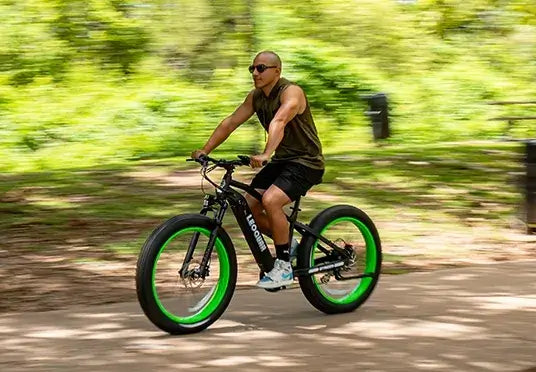


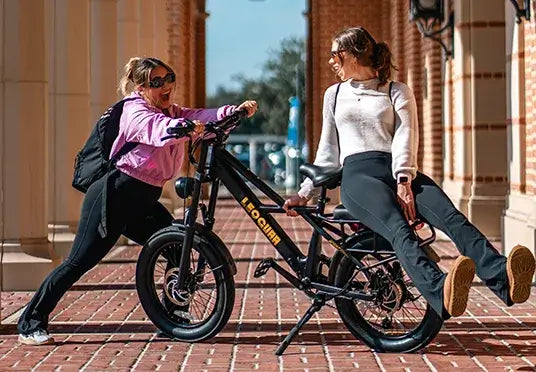



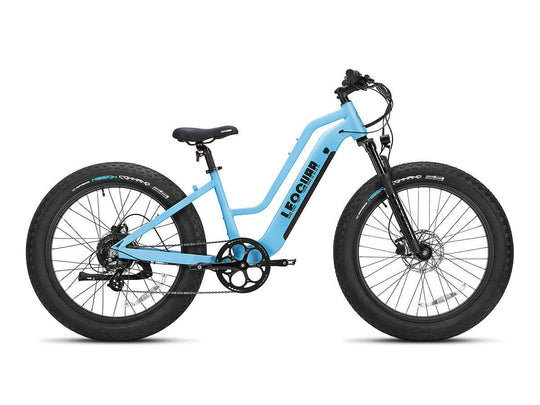
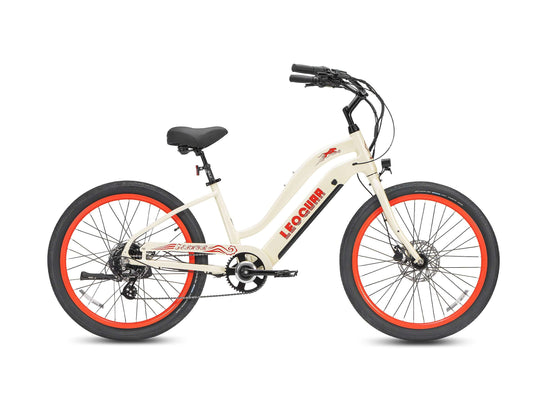
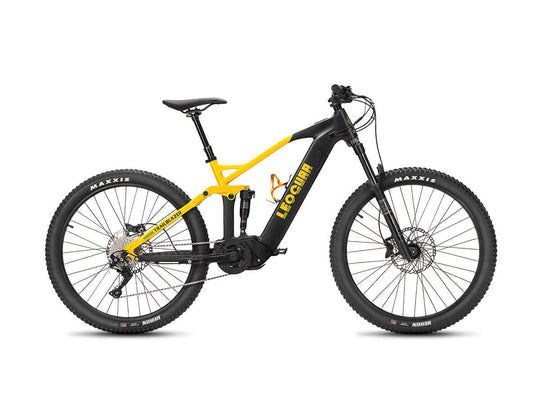

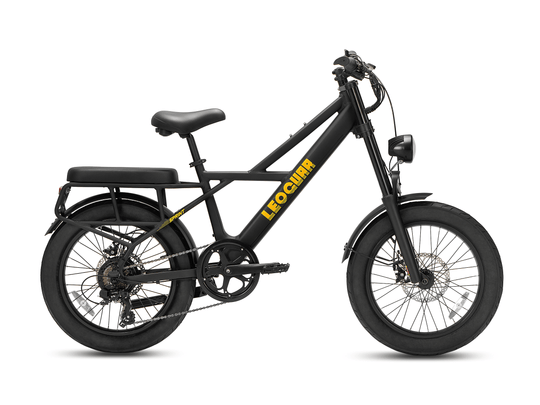

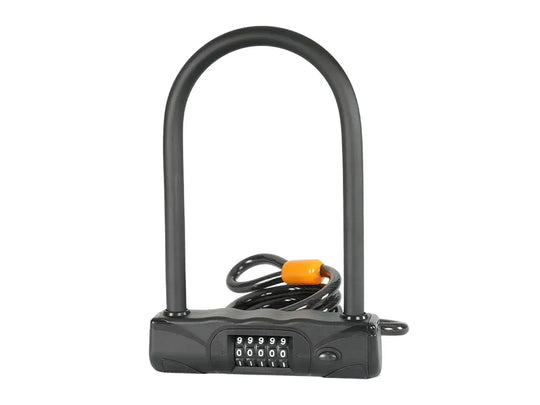

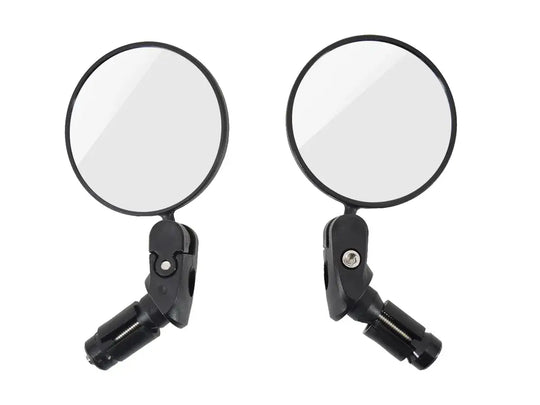
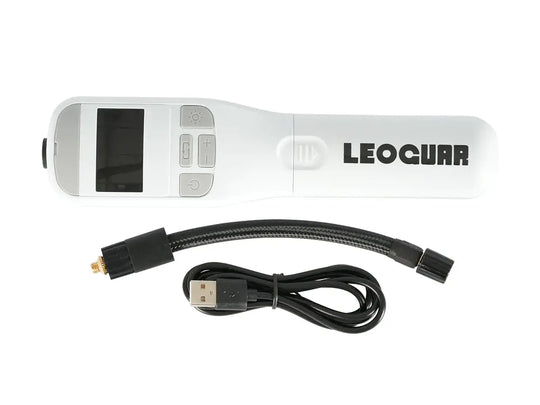
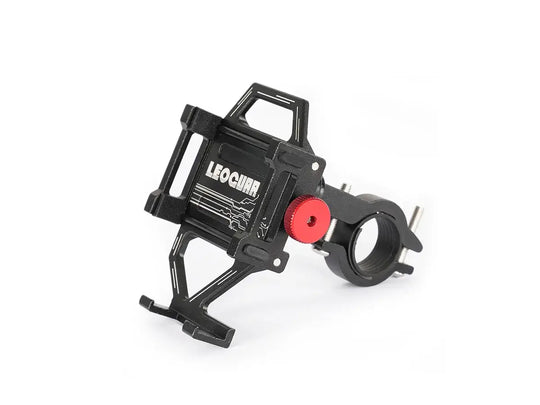


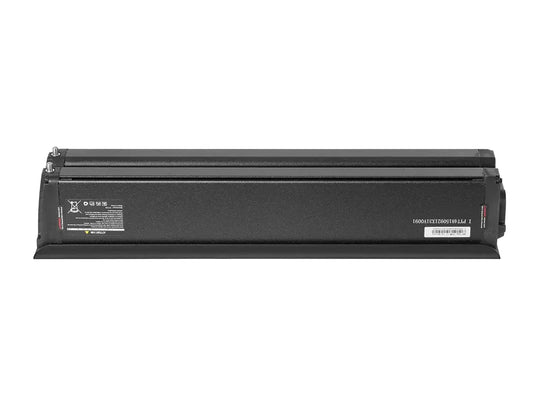

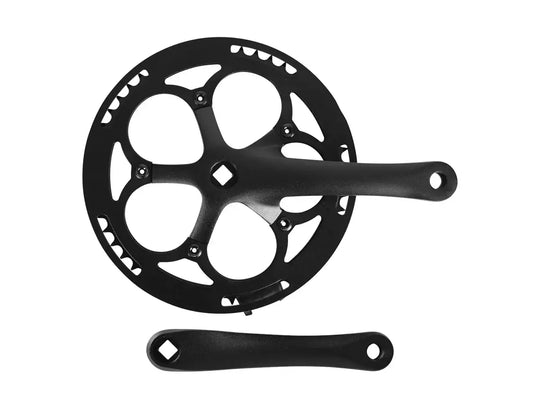
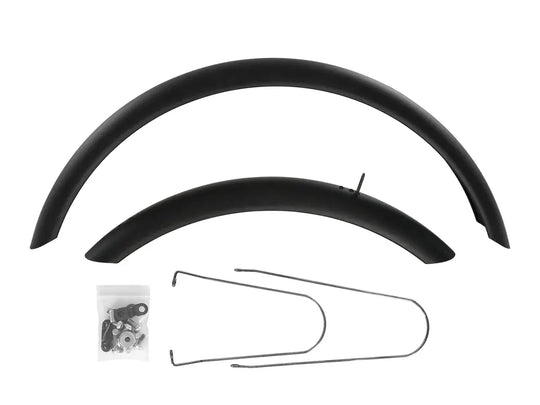
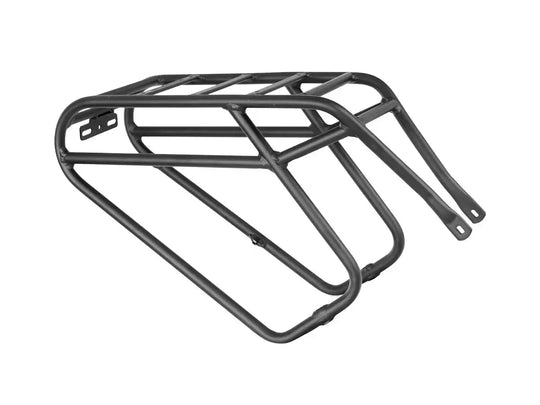
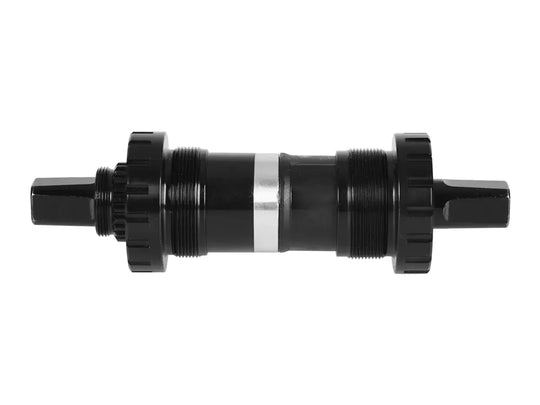
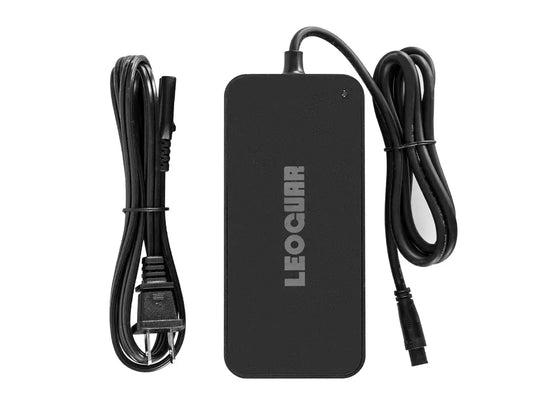
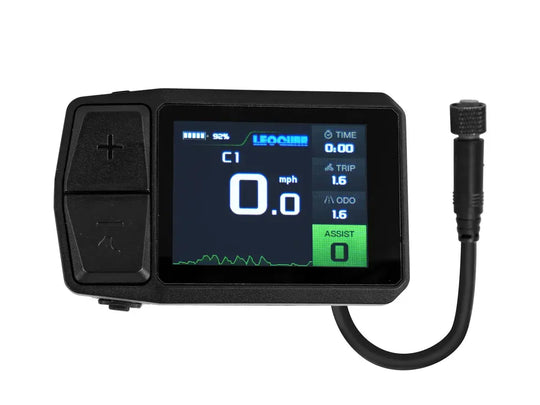








Leave a comment